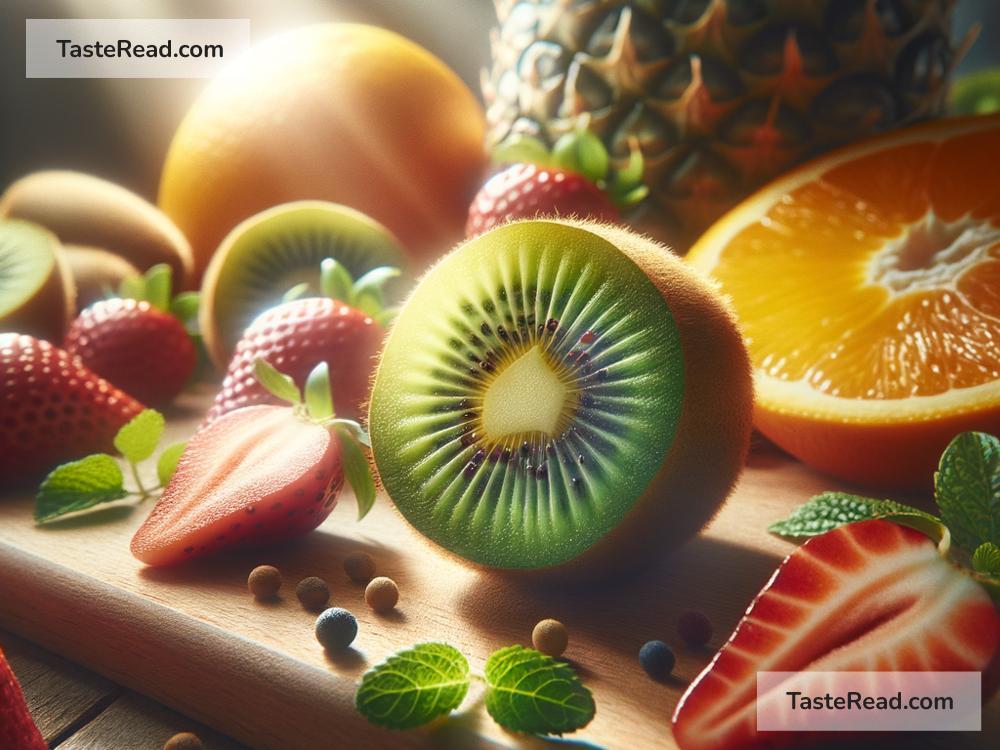Why Fruits Like Kiwis Have a Tart-Sweet Balance
Have you ever bitten into a kiwi and noticed how it tastes both sweet and tart at the same time? That unique flavor combination makes kiwis a fascinating fruit. But have you ever wondered why fruits like kiwis have this tart-sweet balance? Let’s dive into the reasons behind this delightful taste and how nature creates such flavorful magic!
What Makes Fruits Sweet?
First, let’s talk about sweetness. Fruits are naturally sweet because they contain sugar. Plants make sugar during photosynthesis, a process where they use sunlight to create energy. This energy is stored in the fruit in the form of sugars, such as fructose, glucose, and sucrose. These sugars give fruits their sweet taste.
The sweetness in fruit serves a purpose. Fruits are designed by nature to attract animals (including humans!) to eat them. When animals eat the fruit, they help spread the seeds inside by carrying them to new places. This helps the plants grow and reproduce. So, the sweetness is like nature’s trick to make fruits tempting!
What Makes Fruits Tart?
Now, let’s talk about tartness. That zesty, slightly sour taste comes from acids in the fruit, particularly citric acid and malic acid. These substances are naturally present in many fruits, including kiwis.
Acids serve important functions in fruit. First, they help protect the fruit from bacteria and fungi while it is growing. Second, they balance the sweetness of the fruit. If a fruit were only sweet, it might be overpowering. Tartness adds complexity and contrast to the flavor, making it more enjoyable.
Why Do Kiwis Have Both Sweetness and Tartness?
The balance of sweetness and tartness in fruits depends on their stage of ripeness and their natural chemical makeup. Kiwis are one of those fruits that are known for having a perfect combination of sweet and tart flavors, and there are several reasons why.
-
Sugar Levels: As kiwis ripen, their sugar levels increase. A ripe kiwi will contain more fructose and glucose, making it taste sweeter. But even when sugar levels rise, kiwis don’t lose their tartness completely.
-
Acid Levels: Kiwis also contain citric acid and other natural acids. These acids are strong enough to keep the fruit tart even as the sweetness grows. That’s why, when you bite into a kiwi, you’ll taste both flavors at once.
-
Ripeness: The tart-sweet balance also depends on how ripe the kiwi is. If you eat an unripe kiwi, it will be more tart because the sugar hasn’t fully developed yet. A fully ripe kiwi, on the other hand, will lean more toward sweetness while still retaining a hint of tartness.
This balance is what makes kiwis so unique. Unlike some fruits that are overwhelmingly sweet, kiwis strike the perfect blend of flavors. This combination ensures that the fruit appeals to a wide range of tastes. Some people love the tangy zing, while others enjoy the fruity sweetness.
How Nature Creates Flavor Balance
The tart-sweet balance in fruits like kiwis isn’t just random—it’s the result of careful chemistry inside the fruit. Scientists have studied how fruits create their flavors, and they’ve found that it’s all about the relationship between sugars and acids.
Acid levels are often highest when the fruit is unripe. This is because the acids help protect the fruit as it develops. As the fruit ripens, sugar levels increase, and the acid levels decrease slightly, creating a more balanced flavor. However, fruits like kiwis keep enough acid to bring that tangy flavor forward even when they’re fully ripe.
Nature finely tunes this process. It ensures the fruit is both delicious and functional. Sweetness attracts animals (including us!) to eat the fruit, while tartness prevents the fruit from being too sugary and adds a unique tang that many people enjoy.
Why the Tart-Sweet Balance Matters
The tart-sweet balance isn’t just important for the fruit itself—it’s also a big reason why people love eating kiwis. Many fruits have a one-dimensional flavor, but kiwis offer something special. Their tangy zing wakes up your taste buds, while their sweetness satisfies your cravings. This contrast makes kiwis a favorite in smoothies, fruit salads, and desserts.
For people who enjoy both tart and sweet flavors, kiwis are a perfect choice. They’re also incredibly nutritious, packed with vitamin C, fiber, and antioxidants. Plus, their tart-sweet balance makes them versatile in recipes—they can add a sweet touch to dishes or complement savory flavors in creative ways.
Other Fruits With a Tart-Sweet Balance
Kiwis aren’t the only fruits with a delicious mix of tart and sweet flavors. Other fruits, like pineapples, strawberries, and apples, also have this balance. However, every fruit has its own unique ratio of sugars to acids, which creates distinct flavors.
For example, pineapples are known for their tropical sweetness, but they have a bold tartness that makes them stand out. Strawberries often taste sweeter than tart, but a good strawberry has just enough acidity to be refreshing. Apples vary by variety—some, like Granny Smith, are more tart, while others, like Fuji, lean toward sweetness with a hint of tang.
Conclusion
Kiwis are a beautiful example of nature’s ability to create a perfect flavor balance. Their tart-sweet taste isn’t just a coincidence—it’s a result of their chemical makeup, ripeness, and the careful interplay of sugars and acids. This balance makes kiwis delightful to eat and ensures that their flavors are complex and satisfying.
So the next time you enjoy a kiwi, take a moment to appreciate its unique taste. Whether you love the sweet fruitiness or the tangy zing, you’re experiencing a masterpiece of nature’s design!


